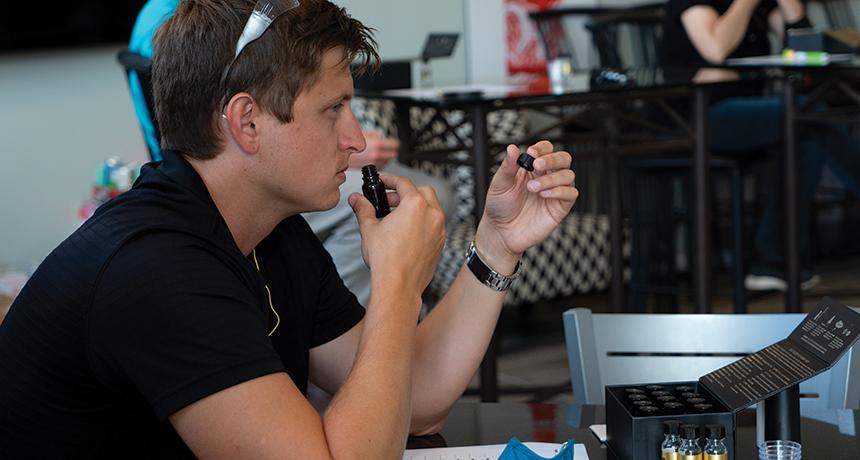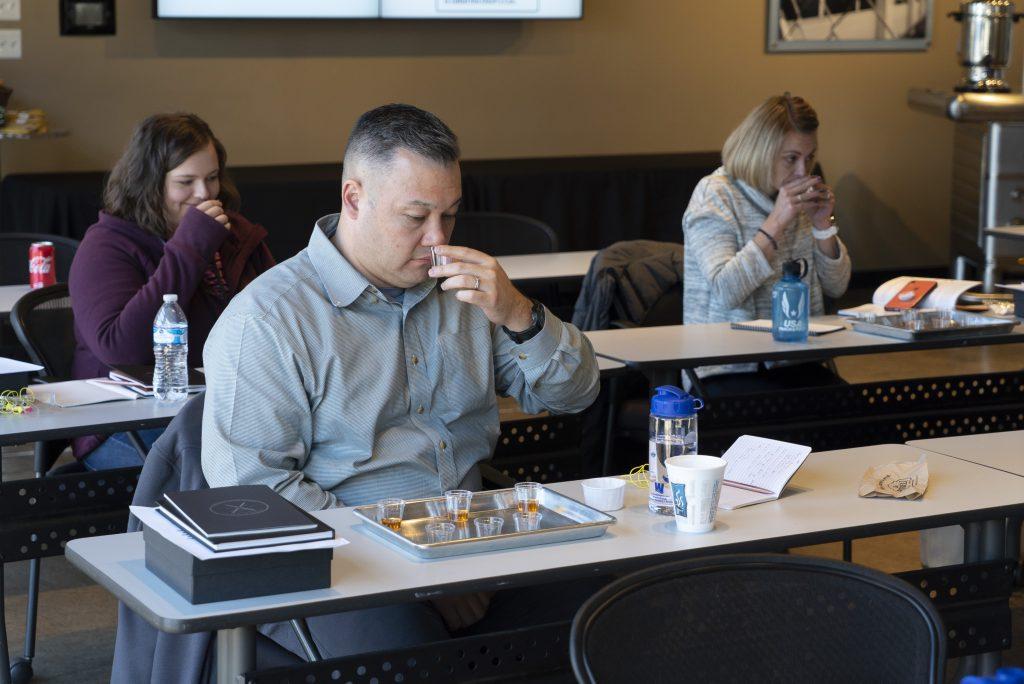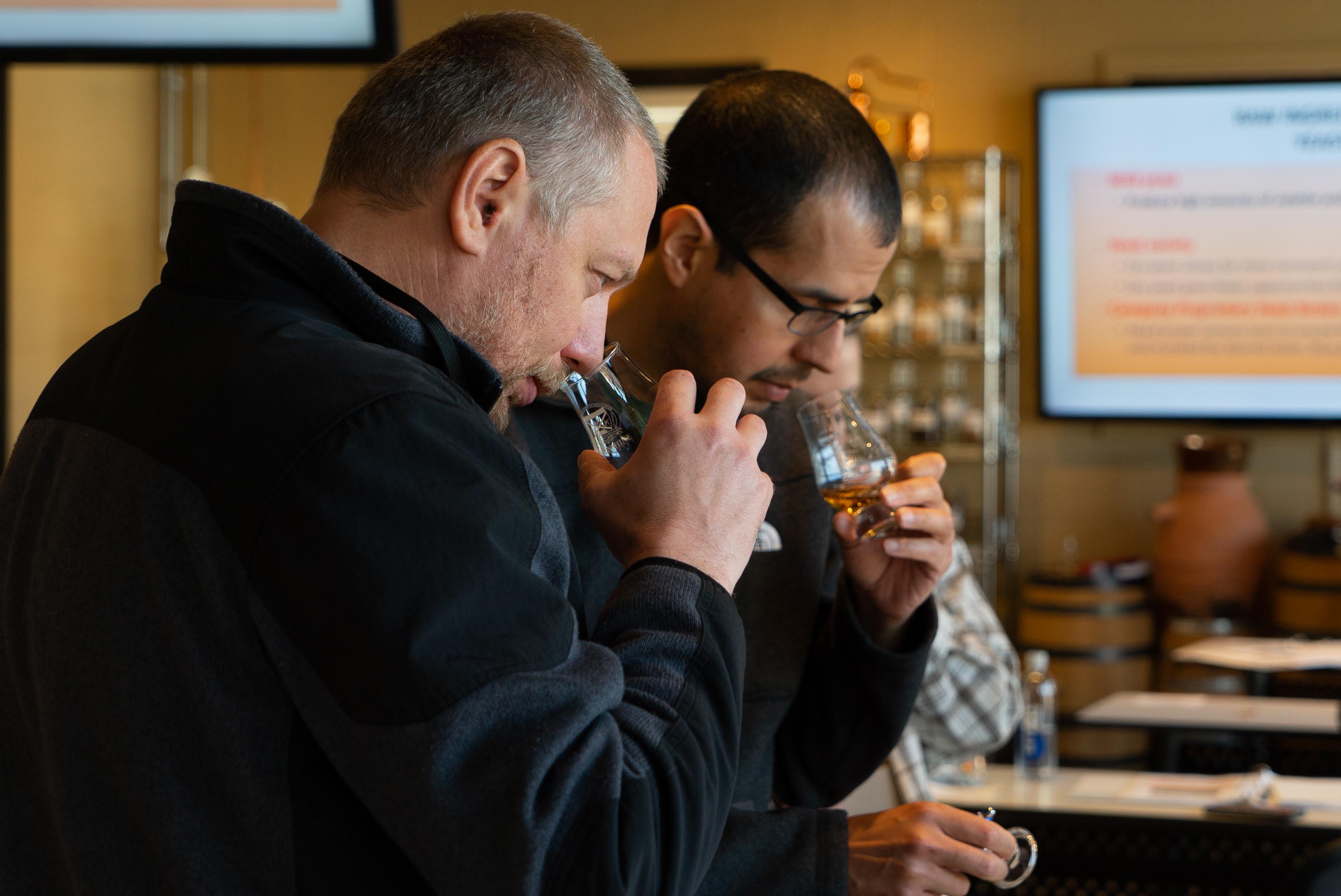
The Art of Non-Alcoholic Spirits
blog
For decades, spirits and cocktails have fostered a culture of craft, connection, and celebration. But over time, cocktail culture has evolved far beyond the buzz!

Written by Shelley Sackier, Director of Distillery Education, Reservoir Distillery.

Our inaugural action of life is to draw air into our lungs. Our last — to release it, to free it from further obligation. Our breath is a rhythm of couplets. And at our birth and our death, where we face our first and final, those breaths are bookends to existence. Within this pulmonary practice lies the deep and heady secrets of scent. The human ability to utilize olfaction is a gift with myriad functions. It detects danger, pheromones, nourishment, and combined with other sensory faculty, the extraordinary perception of flavor.

When I teach a course on Whiskey Nosing and Tasting 101, it is to both audiences internal and external to Reservoir Distillery where I work as the Director of Distillery Education. Participants are those employed within the industry and those simply looking to further their enjoyment of the spirits we've been creating since 2008.
Often attendees do not know where to begin in search of training and education. Many believe you are either born capable of smelling and tasting the complexities of whiskey, or see it as such a daunting endeavor, they throw in the towel before even using it.
Here is what I say to those folks: Do you have a nose? Does it function fairly well-air passes in and out? Can you detect when it's time to change the baby? If your answers are "yes," then you, too, qualify as educable.
And the learning of these lessons are paramount for our patrons' enjoyment of our products, so it behooves us to aid them, but it might be more important for ourselves, employees, and colleagues to find education, as with these skills we not only determine what has gone right with our processes from grain to glass, but also what has gone wrong.
We need the ability to discover what part of our procedure has experienced malfunction. Sometimes distillers make these discoveries ultimately too late in the process, detecting the fault in the finished product once bottled, or worse, once returned by a customer.
Wouldn't you rather your mashman recognize the slight aroma notes of mold within the last delivery of corn before grinding, rather than hire an expensive consultant to identify the off-note culprit in the final product?
And wouldn't you feel confident that your stillman can immediately identify the soapy taste within the distillate the second it pours off the still, indicating now is the time to unsully its insides before making another run?
How about trichloroanisole? How many of us can pinpoint that musty, wet dog, damp basement note in a barrel that a trained nose would identify as TCA or cork taint?
Discovering you've rested your barrels on chemically treated wooden pallets that transferred the compound into the cask and infused your spirit is a devastating discovery. Worse, is if it goes undetected until you've gone through the expense of bottling, labeling, and shipping, and your customers are writing reviews of your misfortune.

Now let's shine a propitious light on this discussion. What happens to your customers after they've come to your tasting room and have been guided engagingly through the enjoyable activity of aroma discovery?
Usually, it's an experience involving a memorable stimulation of their limbic system. Referred to as the "Proust Effect," the scents within your whiskey light up the hippocampus within our brains and trigger a memory. Frequently, an engaging, warm, and desirable one.
Do you know what typically follows comments like these?
The wish to repeat them. You've provided a trip back in time, an emotionally charged moment, a taste of the past, and your patrons often revel in that heady soup of memories. You've created brand loyalty.
There is surprising value knowing our olfactory epithelium — the postage-sized stamp of tissue where nose and tongue meet — can detect millions of aroma compounds; this is far more than we once believed.
Educating ourselves with a deeper dive into olfactory training is as simple as holding a routine blind tasting with your employees and your spirits.
Use an aroma wheel to help identify and memorize what is so often incredibly difficult for most of us to articulate. Purchase a nosing kit to aid this skill development.
Educating our customers is as enjoyable as holding classes at your distillery and walking your patrons through the simple lessons of gleaning far more complexity than they first understood.
The need and great benefit of organoleptic analysis cannot be emphasized enough — and clearly, it makes scents for all of us to learn to follow our noses.
Written by Shelley Sackier, Director of Distillery Education, Reservoir Distillery.
Related Content
The Great Debate: Whiskey Closures

blog
For decades, spirits and cocktails have fostered a culture of craft, connection, and celebration. But over time, cocktail culture has evolved far beyond the buzz!

blog
Those that are familiar with the process of crafting distilled spirits may also be familiar with the 10 common congeners that are created during fermentation, and honed during the distillation run. Each congener has its own distinct personality, rendering unique tastes and aromas to the finished spirit.

blog
So, you want to start distilling with freshly milled grain. Maybe you're tired of paying top dollar for the pre-milled stuff from the malt distributor, and you're ready to invest in the quality, efficiency, and bulk pricing that comes with milling your own whole grain. But where do you start?